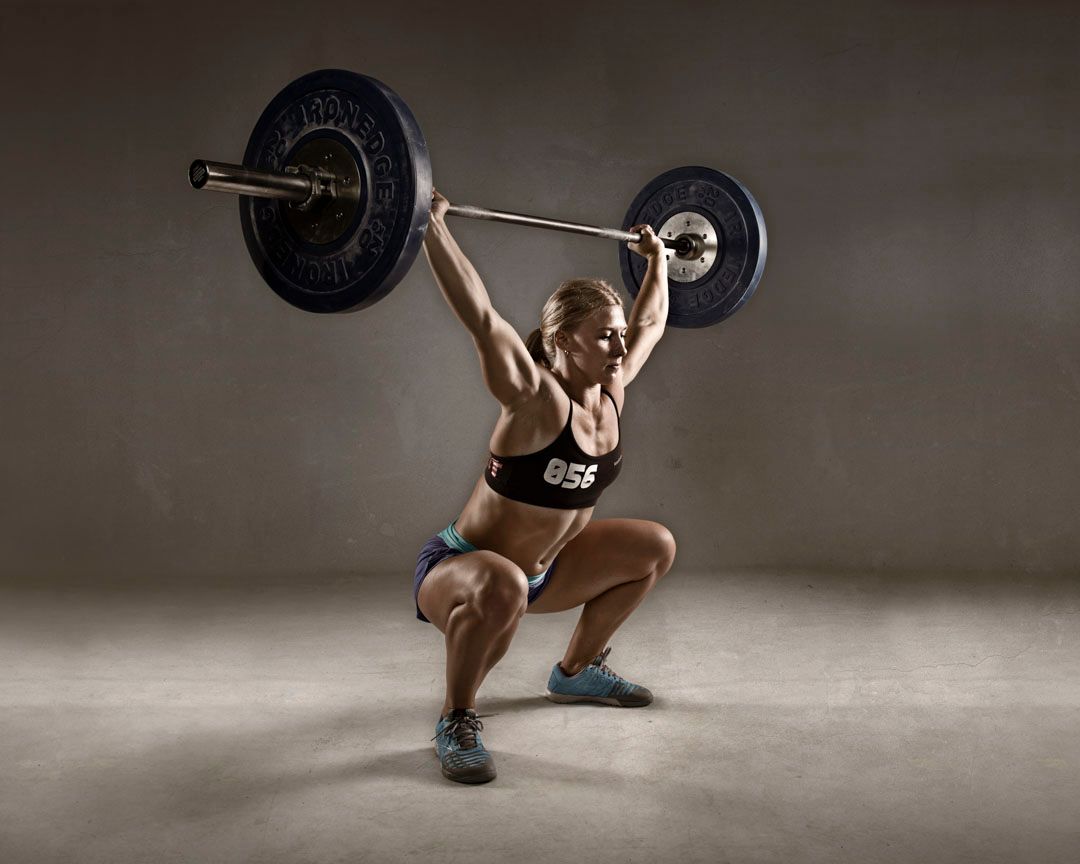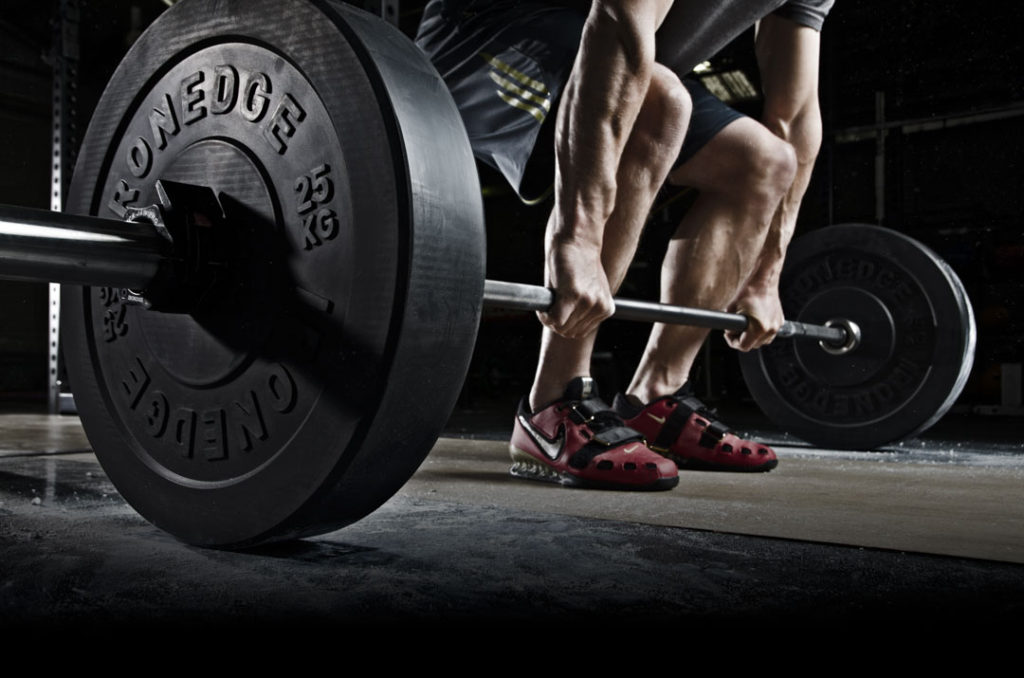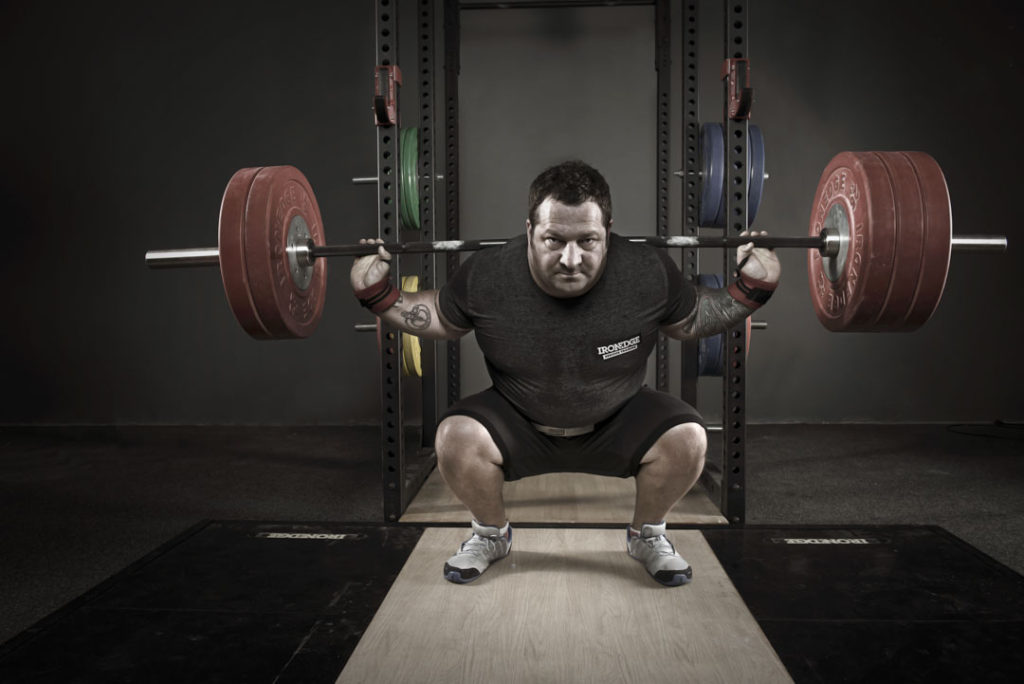Elevating the Heels when Squatting –Yay or Nay?

The idea behind elevating the heels when squatting (by either placing a plate under the heels or wearing specifically designed weightlifting shoes such as Nike Romaleo’s) is to place the ankle into plantar flexion whilst in a stable position; allowing the knees to travel further forward when squatting down. From there, the hips do not need to sit back as much, and a more upright torso position can be maintained. This is ideal for the front squat and Olympic weightlifting; debatable but generally not used for a powerlifting squat; and contested when it comes to athletic training.

Why Would/Wouldn’t I Want an Upright Torso?
When squatting, regardless of the goal or lifting style, the Barbell should be in a straight line above your feet,

Powerlifts are training solely to squat (and deadlift and bench) as much weight as possible. Therefore a powerlifting squat is performed to parallel and no lower; generally with a wide stance as it is easier to reach the required depth, and with significant forward lean. This creates a shorter lever between the hips and the bar, and thus a greater mechanical advantage; powerlifters do NOT want an upright torso.
Olympic weightlifters train solely to increase their clean and jerk and snatch. Whilst a back squat is a handy accessory exercise, the weightlifter must become proficient at front squatting with a clean grip. If the weightlifter leans too far forward when front squatting, the bar is not supported by the upper back and will simply drop to the ground. Therefore the athlete must stay more upright to complete the lift. Weightlifters do want an upright torso.
But I’m Not a Weightlifter or Powerlifter
It’s tough to give a specific yes or no answer without determining an athlete’s goals, injury history and skill level in the gym. Quad dominant squats (high bar, upright torso, narrow stance) generally translate better to

Will This Negatively Affect my Knees or Ankles?
The idea that it is dangerous for the knees to travel past
the toes is flawed. This “tip” is based off either squatting purely for
powerlifting, or teaching the squat early on when the client will translate
using entirely their knees when lifting a heavy item to performing a squat;
leading to heels coming off the ground or similar mistakes. If the same persons
foot grew a few centimetres, would they suddenly be able to push their knees
more forward? Of course not; the size of the foot has no bearing on squat
mechanics and is thus arbitrary.
Any weight bearing exercise is going to put stress on the joint being used. Most people would agree that front squats are a knee-dominant exercise, and that back squats are relatively hip-dominant. Conventional logic would dictate that allowing for more knee flexion under resistance will increase stress on the joint. Yet in a highly referenced study by Gullett, Tillman, Gutierrez & Chow (2009) front squats were shown to have “significantly less compressive forces and extensor moments” compared to back squats, when participants used 70% of their 1RM. Back squats were performed at an average of 61.8kg + 18.6kg, whereas front squats were performed at an average of 48.5kg + 14.1kg. This would indicate that resistance may be a more important factor than small changes in joint angle.
One criticism that is more relevant is athletes using wedges/weightlifting shoes as a crutch for poor ankle mobility. In the case that ankle mobility needs to be improved, then yes, using wedges/weightlifting shoes would be a band aid solution allowing the athlete to get around this issue and still train by elevating the heels. But there is no reason why they have to be used at the expense of developing or maintaining adequate ankle mobility; simply make an effort to develop mobility and cut down the need for a wedge.
Summary
Powerlifters are more likely to squat with a hip-dominant
style which reduces the need for added dorsi-flexion, the shin is already near
vertical; whereas for Olympic weightlifters specifically designed weightlifting
shoes are almost a requirement. Other athletes will fit somewhere between this
spectrum depending on how they squat, what their goals are and their injury
history. Try squatting with plates under your heels first, and decide for
yourself if the movement feels more comfortable.
References
- Gullett, J.C., Tillman, M.D., Gutierrez, G.M.,
Chow, J.W (2009) A biomechanical comparison of back and front squats in healthy
trained individuals. Journal of Strength
and Conditioning Research; 23(1): 284-92.